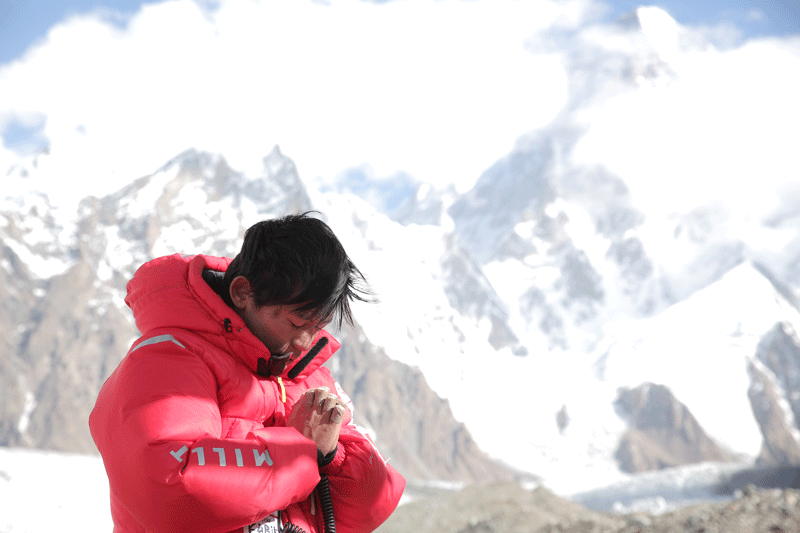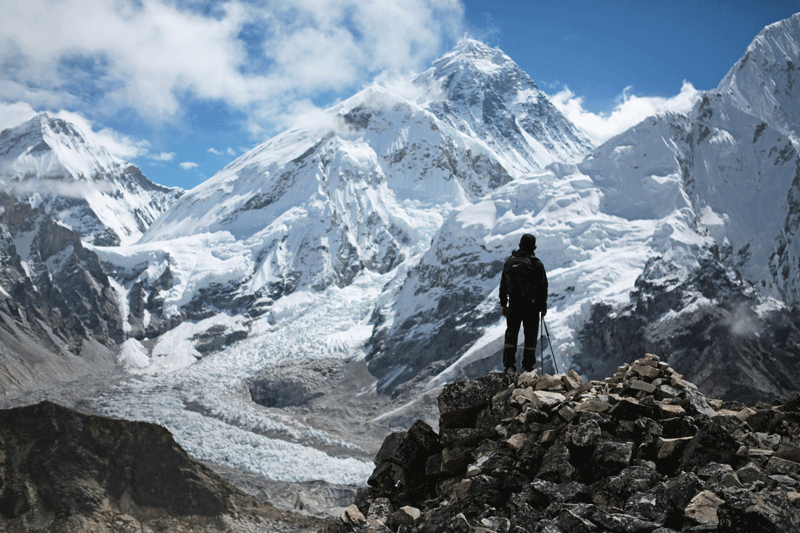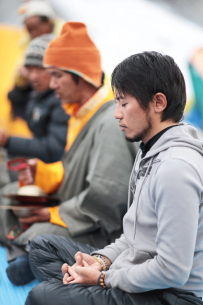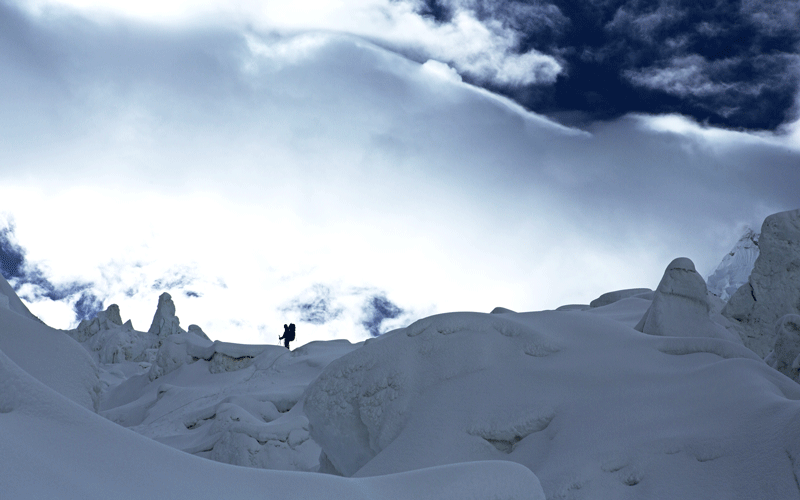Everest may seem insurmountable for the vast majority of us. But Japanese climber Nobukazu Kuriki intends to scale that highest of peaks with the added hurdles of missing all but one of his fingers, while also recalling the broken hearts of thousands of local Nepalese.
By Kyle Mullin
His ascent, which begins today, is the first since Everest was closed after the earthquake that devastated Nepal earlier this spring, killing more than 9,000 and leaving 22,000 injured. Kuriki himself sustained severe injuries during his last visit to the mountain, in October 2012, when he attempted to reach the peak, taking a route along Everest’s notoriously difficult West Ridge, alone and without supplemental oxygen. Most climbers make the trek during more optimal conditions in spring, but Kuriki’s last autumn expedition meant shorter days and encroaching snow, elements that proved so difficult he eventually suffered severe, life-changing frostbite.
“My fingers, toes, and nose got frostbite when I was descending from the 8070m point of Mount Everest’s West Ridge alone. As a result, I lost large portions of nine of my fingers,” Kuriki tells Weekender during a recent interview, adding that his toes and nose eventually healed, while only nubs from the first joints of his nine fingers remain. He goes on to say, “I lost my fingers, but at the same time, I learned a lot about my life and many people supported me.”
One of those chief supporters was Kuriki’s father, who had one thing to tell his daredevil son in the hospital: “Congratulations!”
“I asked why, and he told me that I would suffer from losing fingers, but I would also be able to try again with such agony, which will be [a] great experience,” Kuriki recalls of the character-building adversity that his father described, adding: “My family and supporters were the fundamental reason for me to overcome frostbite injury.”
Now, after three years of healing and physiotherapy, Kuriki is ready to return to Everest and overcome his demons once and for all. Kuriki climbs with no support or prosthetics. His right thumb healed normally from the frostbite, so he has a stronger grip in his right hand than he does in his left. He says: “I also took a long time for rehabilitation so that I can do anything by myself without help, which gave me confidence.”
But his personal motives are dwarfed by the towering reason that is bringing him back toward the summit: the thousands of Nepalese citizens whose lives were taken or ravaged by this past spring’s earthquake and mudslide.
“I’ve been deeply worried about the earthquake. I sent emergency relief goods and money, gathered in Japan, but I realized that the most sustainable support would be to visit Nepal,” Kuriki says of being the first climber to return to Everest since the quake, making him an ambassador of sorts – albeit one with a grappling hook and rope. He then elaborates about his motives: “The number of visitors to Nepal has been dramatically decreased. Climbing Mount Everest is my primary challenge, but at the same time, I want to tell the world how much Nepal is attractive to visit.”
For Kuriki, much of that attraction lies in Everest’s challenges, which make the summit all the more beautiful in his eyes. When asked about climbing the mountain again in the autumn, less than three years after that ferociously cold season took nine of his fingers, Kuriki replies: “There are too many people in Everest in spring, which is the best season. I want to experience nature, and that’s possible in fall without many people around.”
And while he loves the view, and more importantly the challenge that the summit itself presents, Kuriki says that his true adoration of Everest stems from a far more personal connection. He explains: “I’ve visited Nepal so many times and have many Nepali friends. Nepal is my second home. Nepal and Japan have a common thing that we suffer from earthquake. People in Nepal and Japan should walk along hand-in-hand to overcome such [a] difficult time.”
In fact, Kuriki’s mountain climbing has always had an element of love and devastation. What first drew him to the sport was not any romanticized notions about scaling dangerous peaks and glimpsing panoramic vistas. Instead, he began scaling mountains to overcome heartache.
“When I was in college, my girlfriend dumped me even though I was madly in love with her. She was a very tough girl and loved climbing, even in winter in Hokkaido. After she dumped me, I started climbing to find out what was missing in me for her.”
That old flame may have given him the incentive to climb, but she was by no means his teacher. In fact, when asked about the mentors that taught him to scale such peaks, Kuriki explains that he has always been driven by, and learned the most from, simply engaging in the ascent itself: “Mountains are my mentors.”
Follow Nobukazu Kuriki’s progress, as he become the first climber to return to Everest after the 2015 Nepalese quake, on Twitter or Facebook.
As he prepared for his September ascent, he posted the following video:
Images courtesy of Nobukazu Kuriki












